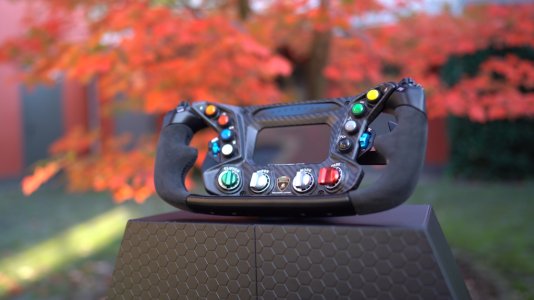I agree with basically every word you said. The instant wheelspin/revs shooting to redline instantly - as if the car lost absolutely 100% of it's grip in combination as if the car suddenly gained a HUGE amount of power is very prevalent especially as you get to more racey cars. Yes, it's often too dangerous to really be manipulating the car and hustling it around the track due to this and some other physics anomalies in the engine.
I don't know if it's as simple as just a torque map problem. That would be too obvious and too easy a fix and I'm guessing that would have been fixed many, many years ago if the problem stemmed from something that simple (this physics engine has suffered from this since I first started playing one of it's earliest versions in F1 2002 - almost 20 years ago). On top of all that, you can watch F1, F3000, F3, GP2, IndyCars, etc. from before they used all this torque mapping trickery (especially to the extent it's used today). However, until the problem is truly fixed, maybe manipulating torque at certain revs as you mentioned can at least be a temporary "band-aid" fix to at-least reduce the severity of the issue?
I have an OSW. It's done this regardless of OSW firmware, regardless of old OSW style, the newer simucube "mode" (for non-true simucube users), and true simucube (simucube hardware) mode (what I currently have). Regardless of 5,000 PPR encoder or 10,000 PPR encoder.
They do lighten as I loose grip. In this spin scenario I'm describing, the force lightens so much that it actually starts applying a TON of force in the opposite direction (opposite lock).
There is no claw affect and, also, I'm not even talking about feel, I'm talking about pure physics regardless of feel. In real life and some other sims, you can get wheelspin and often times the naturally clawing affect from the tyres prevents the wheelspin from increasing and sometimes even ends the wheelspin on it's own. This is easily observable by watching videos all over the web and it's done quite well in NKP and LFS but in RF/ISI/AMS physics, the majority of the time, the rear wheelspin will just keep on increasing (unless you, yourself, lifts off the throttle) as if every last tiny ounce of grip was lost or as if your car suddenly gained tons more Hp. There is no "clawing" effect which makes the natural grip of the tyres/car want to stop or at least slow down the wheelspin.
Yes, I know that some spins can take you by surprise. I myself have been caught in a couple snap-spins in real life F2000 racing. One where I was leaning hard on the right-side tyres during a fast left...my right-rear touched a bit of grass on the outside and it snapped very suddenly because I was already laterally leaning on the right tyres very hard. And I had another one in the wet that was similar but involved hitting a piece of track that was much more wet than the other parts I was on before. In bot those examples, I was already leaning on the tyres very hard and already extracting close to 100% grip from the tyre prior to suddenly driving over a much more slippery surface.
Here's a video I made showing the overpowered opposite lock. Note, I am purposely making the car spin but, even so, notice how every one is an insanely sudden snap almost as if at the very moment the car looses grip the game says "I don't care what inputs the driver makes, I've already decided I will put the car into an instantaneous spin and there's nothing the driver can do about it. I will ignore any and all driver inputs." Anyways, I made this video to show the over-powering opposite lock effect,
not actual physics stuff (but AMS' FFB is almost purely based on physics so I believe there's got to be some relationship here).










